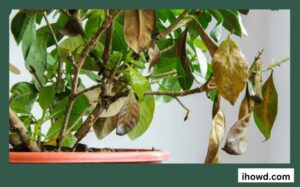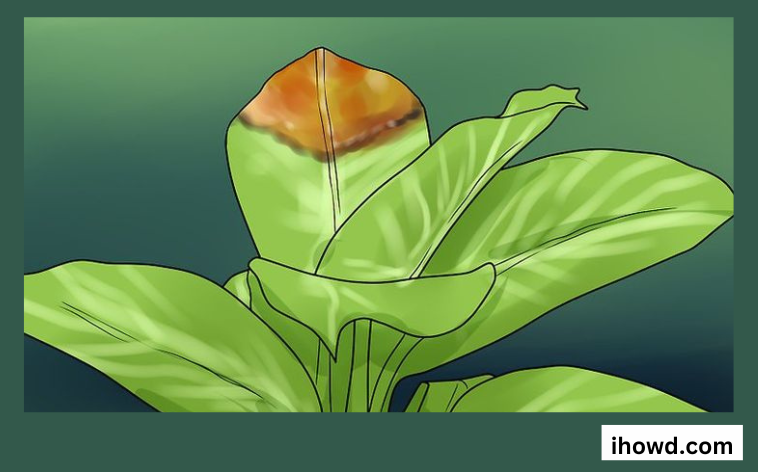Browning leaves may appear ominous, but they typically don’t indicate a serious problem. Instead, consider them to be a mini-report card on your plant-care performance. They offer insightful criticism and might point out areas where your houseplant needs improvement. The position of the browning is the first hint when interpreting what your plant’s brown spots are attempting to tell you.
Here are some broad guidelines of (green)thumb to keep in mind, even if the reason for browning can vary depending on the kind of plant you have and where it is located.
Water or humidity shortage

You may need to water your plant more frequently if the leaf tips are crispy, black, or brown. Check the soil’s moisture level, then gradually shorten the time between waterings. Keep an eye out for evidence of growth in your plants. These six suggestions will help you water container gardens.
The absence of humidity can possibly be to blame
In comparison to our homes, tropical plants prefer higher humidity levels. In the winter, there is even less moisture in the air when we put on the heat. Plants should be grouped together so that the neighbours gain as one plant loses moisture through its leaves. or set plants on saucers or trays that have water and pebbles in them. On the pebbles over the water, place a pot. Water evaporation raises the necessary humidity level in the area around the plant.
Reasons for Houseplants’ Brown Leaves
Because they are maintained in an unnatural environment, houseplants are unique. They rely on you for all that nature would otherwise provide for them, and they alert you to your errors. When indoor plants have brown leaves, it nearly always indicates that they are either receiving too much or too little of a critical element.
Lack of light is a very prevalent issue with indoor plants. The leaves of your plant will begin to turn brown if it is not receiving enough light. You can be fairly certain that this is the issue if the plant’s side that faces away from the light source has brown leaves.
Water: Another frequent cause of brown leaves on indoor plants is insufficient watering. In this instance, the browning and curling typically start at the plant’s base and work their way up.
Lack of humidity is another prevalent issue that goes unnoticed most of the time. Particularly tropical plants require more humidity than a typical home is likely to provide. The leaves typically only darken at the tips as a result of this. Consider spraying your plant with water or submerging the container in a dish with water and small stones.
Heat – An further issue that often results in leaves that brown, curl, and drop off is excessive heat. Try making those modifications first since this issue frequently results from either too much sun or little water. The plant can also be relocated to a location with greater airflow.
Brown leaf tips might result from the soil having a high salt concentration

Brown leaf tips are often caused by this, but it’s a rather simple fix.
Make sure you don’t allow water that has passed through the soil lingering in the saucers of your plants.
One advantage of top watering is that it removes minerals from your tap water or leftover fertiliser (even if you haven’t fertilised your plants, the soil may have been treated when you bought it). Your plant will reabsorb the salts if you leave it in this water for a while.
Consider watering your plants with filtered or rainwater if your problem with brown leaf tips doesn’t go away.
Generally speaking, you shouldn’t need to fertilise your plants the first year you have them because the soil in which they are potted will be sufficiently nutrient-rich. Similar to overwatering, overfertilizing will poison your plant and burn its roots, which will quickly destroy it.
You have a few options if you believe you overfertilized a plant or believe a plant that was provided to you was overfertilized.
Replant it. Repotting can be stressful for the plant, so only undertake it if you feel that there is no other choice. The roots should have as little soil remaining on them as possible before being potted in new potting soil.
Get rid of the dirt. Continue to spray water through the soil, making sure to allow it to drain completely through the perforations at the bottom. To make sure your plant can’t reabsorb any water, place it on a draining board for a few hours.
The conclusion
The brown patches on your houseplant could be communicating a variety of things, but their location can give you a quick hint. While browning insides is more often caused by overwatering, browning margins frequently indicate a difficulty with underwatering or irregular watering.
Visit ihowd for additional information.
